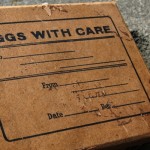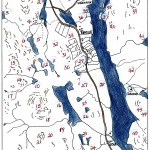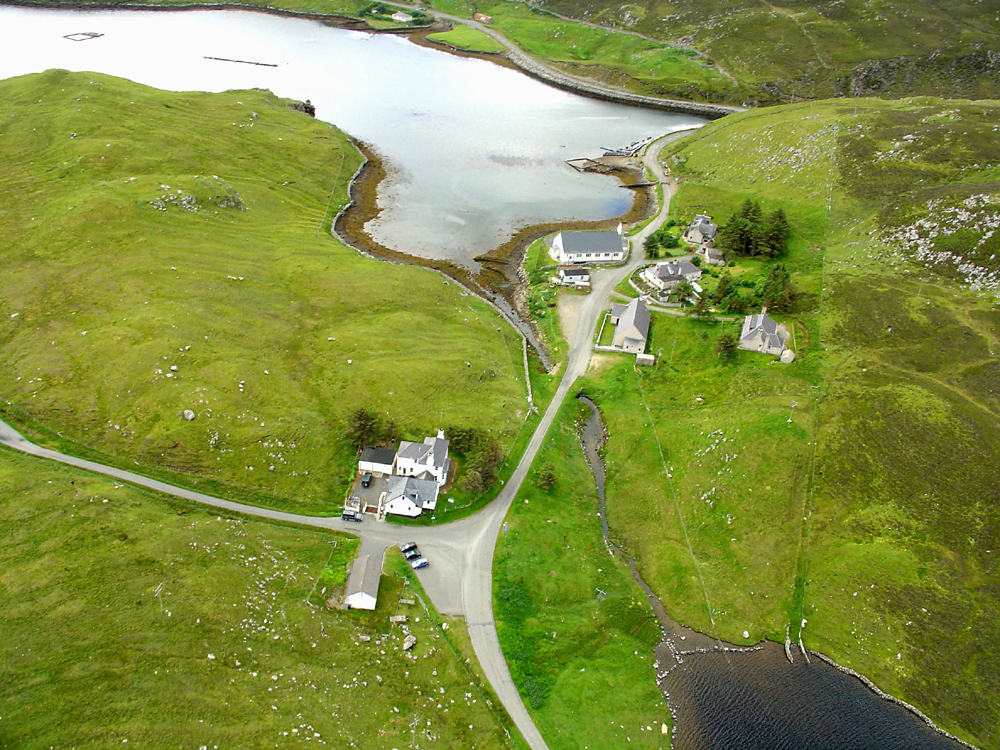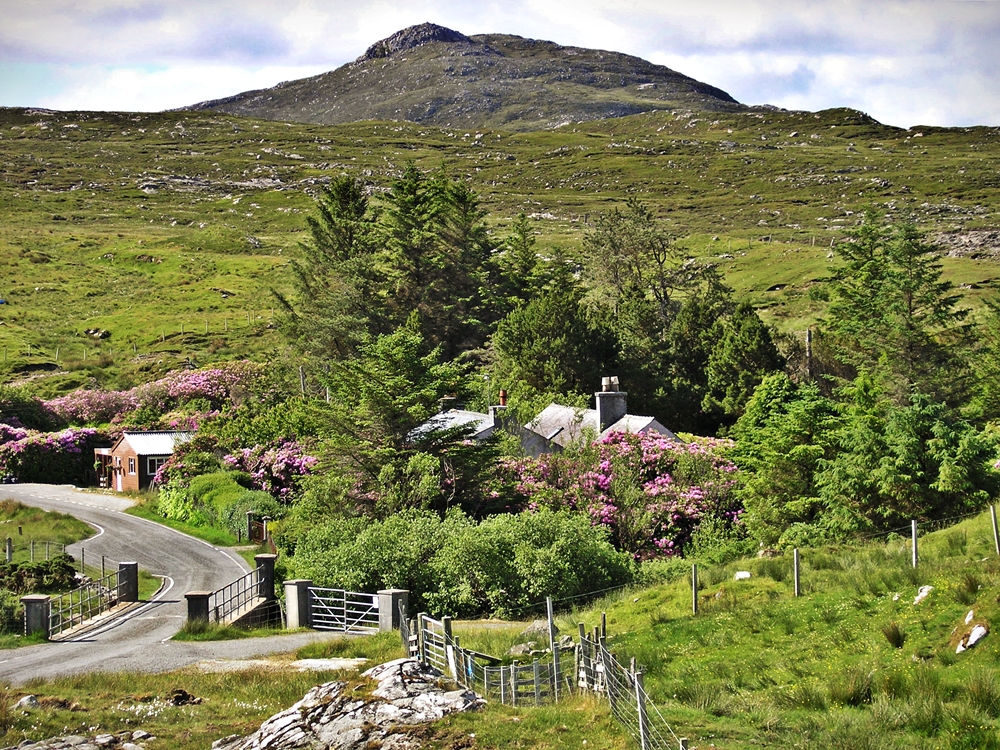Tag: gisla
Wartime Shops, Vans and Buses
Dolly Doctor speaks up for Gaelic
December
Christmas at Fort Pitt, 1884
The Career of William Maclean
Placenames: Enaclete and Gisla
Gisla, c1980
Duncan and the Spacemen
The Gathering
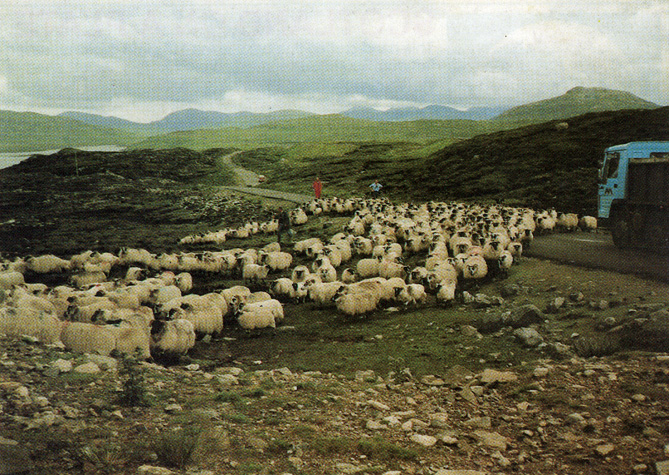
This account of the gathering of the sheep into the Gisla fank for the clipping was written by David Henderson and first published in the Scots Magazine in August 1995. These large-scale community gatherings are now, sadly, a thing of the past. There are more pictures in the gallery, and of the fank at Loch Suainebhat here.
In the diffuse crofting culture of the Western Isles, the summer gathering of the sheep from the moors is one of the main highlights of community life. The practice has remained virtually unchanged since the arrival of the sheep in Lewis, and is a ritual I, as an incomer on holiday from Musselburgh, was priviledged to take part in. The gathering made the highlight of my stay.
My uncle Jim and I woke at dawn. The weather looked poor – drizzle and mist hid the view of Loch Roag from the kitchen window. I was sure the gathering would be put off – wet weather meant damp fleeces, difficult clipping and hours of drying for the Blackface wool we were to harvest.
Donald Calum Morrison, our crofting friend from Valtos, arrived at 7am as planned, refusing tea and looking skyward. “It looks awfully dull,” he said, “but no one’s phoned me so the gathering’s still on.”
Soon I was huddled in the back of Donald Calum’s austere van, sharing floorspace with an excited sheepdog who seemed to know what was in store. We rattled and bounced down the single track road, through Miavaig and on to the road south, pulling into passing places from time to time for a competing car, Donald Calum waving to them with the easy grace of one used to the island etiquette. Then we reached Gisla for the start of the walk into Morsgail Forest, a barren moor between Lewis and Harris where the Valtos crofters’ sheep roam their common grazings.
More than a dozen cars were gathered there. A brief discussion took place in the rain. All the crofters were annoyed that the weather had closed in – during the fortnight before, it had been “just like the Sahara,” as one local put it. There were pensive faces, shaking heads, pursed ips and whistling through teeth. “If it doesn’t dry up soon, the wool will be soaked,” said one man.
Gisla Fanks, 1990-1995
Dolly Doctor
Going to the Shieling
From left, Emily Macdonald Gisla, Effie Maclennan 36 Cliff, and two visitors, visiting a shieling.
From Emily’s Twenty Years of Hebridean Memories (1939) – observing from Gisla Lodge the girls going to the shielings at Airigh an Fhorsa and Bo Nighean Mhuirich. The ones Emily mentioned visiting near Loch Coirgeabhat may be at Airigh an Uisge.
Crogabhat, one of our fishing lochs, is a mile from the bungalow, and there we constructed a concrete boathouse which is useful as a lunch hut too when it is cold or wet. About a mile beyond it are two shielings to which we occasionally make an expedition. Shielings are small huts of stone and turf, where girls live for six weeks in the summer while herding the village cattle, brought there to feed on the fresh hill grass of the surrounding moor. This serves a doubt purpose, as it gives the grass round the village a chance to grow, while at the same time the cattle are getting the benefit of moorland feeding. The shielings are often as far as ten miles from the villages, and the day of migration thence is full of excitement.
Of course, we at Gisla can only guess at all the bustle of preparaton that must have gone on since the early morning, but any time after midday the first of the precession begins to pass the bungalow. Groups of cattle of various sizes pass by, accompanied by old women and young girls, and dogs anxiously helping them with the herding. These all turn on to the moor just beyond the boundary of our garden, and there the humans sit down to rest and await their friends still on the road, while the cattle begin to browse, and the dogs fuss around and interest themselves in canine affairs.
After a while, a couple of boats can be seen coming up the loch, and we rush down to the shore to see the unloading. In them are the men, with a miscellaneous collection of bedding, stools, milking pails, churns, meal bags, pots, kettles and all the paraphernalia required for a stay of some weeks on the moor. Also a number of calves too young to walk the whole distance with their mothers and of course more dogs. After leaving the boats, the men load the good into creels which they carry on their backs, and joining the women folk who have already arrived, the whole procession starts off for the distant shielings. There are four lots in Uig [by this stage, when they were falling out of use], and these people I have just described have a much longer way to go than those occupying the sheilings we sometimes visit.
Annie and Donald 1952
Miavaig, Carishader and the Bays in 1959
A chapter (abridged) by Annis Heawood from Uig: A Hebridean Parish (1960). Photo by Chris Murray.
The district here described includes Gisla, near the head of Little Loch Roag, Enaclete, Ungeshader and Geshader, on the western shores of Loch Roag proper. All these are strung out on or close to the main road. Miavaig, like Gisla, is a small farm but also functions as something of a metropolis for south Uig; it has the post master, whose other functions include registrar and receiver of wrecks, and it has two churches, a telephone exchange, the district doctor and mans, and a petrol pump. At the time of our visit it was also the base for the ‘bus service. Its metropolitan functions arose in the days before the road replaced a ferry boat service from Callanish; here the mails were landed until some date in the 1920s and here to the estate kept coach and horses for transport to Uig Lodge, three miles further west.
There is no record of the original settlement of the four crofting townships, nor of Gisla, which was a township or joint farm of five crofters until about 1850. Some modern houses and bungalows have been built, many with easier access to the road than the old black houses, now often used as byres. Water supply does not seem to present a serious problem because of the extensive moorland gathering grounds to the west, but there are not at present any water-supply schemes. Electricity is, of course, available. Carishader an Enaclete are on the main Stornoway road being served at present by the ‘bus and by vans selling meat, groceries and fish at least once a week. Enaclete has a sub-postoffice. Geshader is less fortunate since, although vans call regularly, ‘buses must be met at the junction of the unsurfaced track and the main Stornoway road, where the school serving this district also stands. The track has been extended in recent years so that it now reaches all the houses. Ungeshader, however , is smaller and although it has had similar delivery arrangements, it is now a dying settlement largely due to its inaccessibility.
Building the House at Gisla
From Emily Macdonald’s Twenty Years of Hebridean Memories (1939). Emily and her husband Dolly Doctor owned Uig Lodge but it was permanently let to tenants.
On our next two holidays in Lewis, we managed to get rooms in Uig for a few days’ visit to the part of the Island we loved so much. But there were few rooms obtainable for love or money, and more and more people wanting those few, so we began to think we must set about obtaining a little house for ourselves in the district. The Lodge was still let and we saw no prospect of being able to live in it for many a year on account of the expense.
Gisla at once presented itself to our minds as a suitable spot in which to build an easily-run house of the bungalow type.
Gisla is included in Uig, and therefore belonged to us, but there was a difficulty to be overcome before we could tart building. The old farmer-crofter who lived at Gisla had, under the Crofters’ Act, the full grazing rights of the place, and on going over to interview him, we found him to be extremely “land-conscious.” Therefore, it was no easy matter coming to an agreement with him as to where we should build. We could, of course, have applied to the Scottish Land Court to resume a piece of land for our own use, and many years afterwards we had recourse to this proceeding when we found we required more land for a bigger garden.


